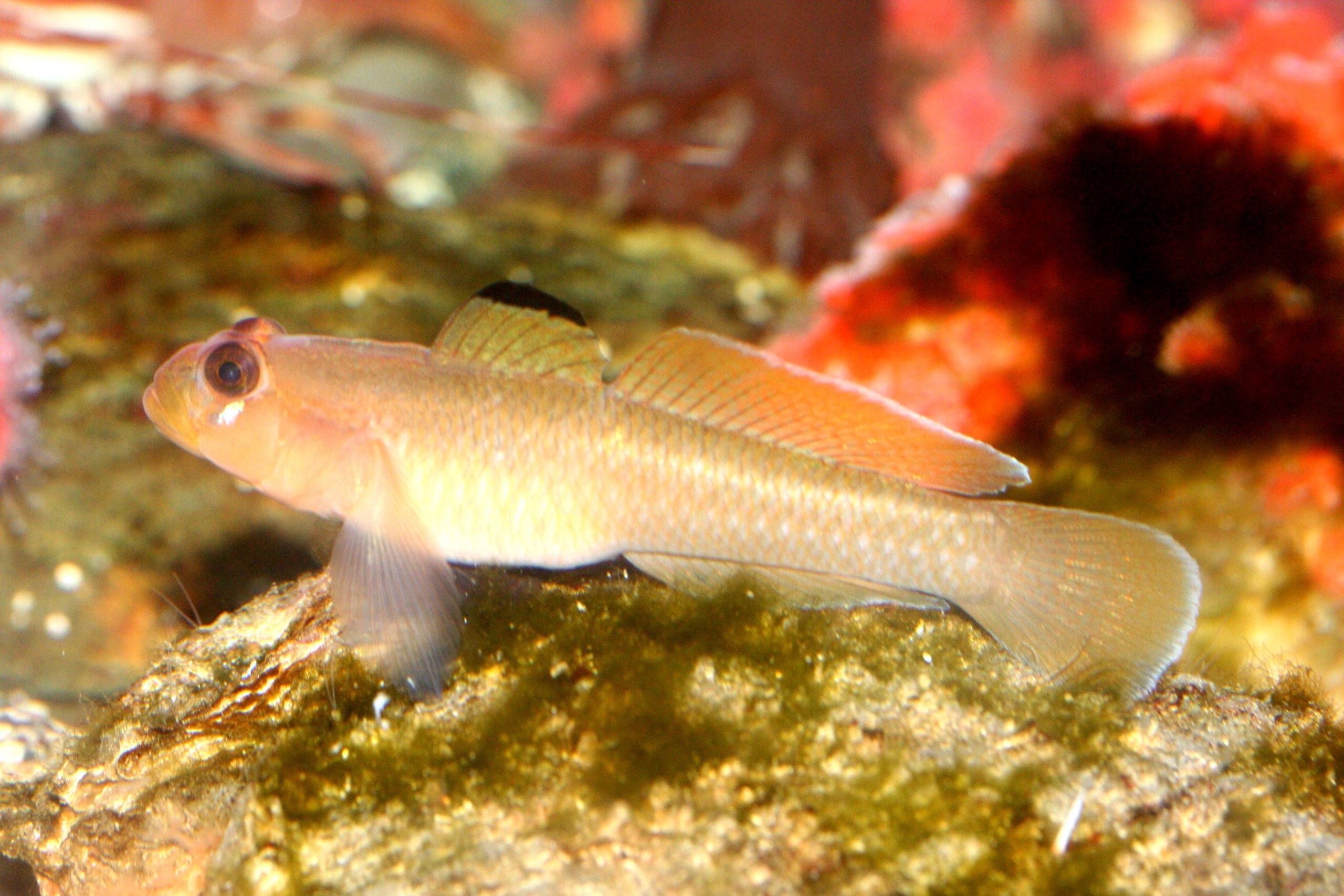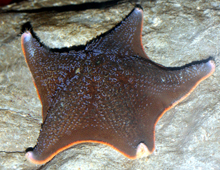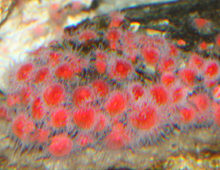British Columbia

Blackeye goby, Rhinogobiops nicholsii
The body of the Blackeye goby (Rhinogobiops nicholsii) is usually a light beige to olive in color with darker spots and mottling. The body coloration and its spots can change if needed. A thick black edge can be seen on the fore-dorsal fin. The raised, big black eyes are responsible for its common name.
LEARN MORE
Bat starfish, Patiria miniata
Bat stars live on rocks, sand bottoms and surf grasses from British Columbia to Mexico. They are known to be omnivorous or scavengers and feed on a variety of plants and animals. To feed, the Bat star everts its stomach, wrapping it around its food to digest it. Like other echinoderms, the Bat star moves using tube feet pressurized by a water vascular system.
LEARN MORE
Strawberry anemone, Corynactis californica
The Strawberry anemone is a colonial invertebrate found in the temperate waters of the North American Pacific coast, from British Columbia to California. It feeds on small zooplankton such as copepods, capturing them in its stinging tentacles. Like other colonial invertebrates, the Strawberry anemone can reproduce by budding, which produces identical clones of each polyp. Clones of these anemones have been known to cover more than 10.8 square feet of the ocean floor.
LEARN MORE
Giant Pacific octopus, Enteroctopus dofleini
The Giant Pacific octopus is the largest species of octopus and has been known to reach sizes of 20-28 feet across and can weigh more than 100 pounds. The average arms span of an adult Giant octopus is about 15 feet. Like other species of octopus, the Giant octopus can secrete an ink screen to deter a predator and can inflict a venomous bite. They can change colors instantly, which is believed to communicate emotion.
LEARN MORE
Tiger rockfish, Sebastes negrocinctus
The Tiger rockfish is named for its striped coloration. The rockfish family is one of the largest fish families found in the temperate waters of the Pacific coast of North America. Its natural range extends from Alaska to Central California and it is known to be territorial and solitary. Many members of the rockfish family have venomous dorsal spines. The Tiger rockfish prefers to hide in rocky crevices and feeds on small crustaceans and fish.
LEARN MORE

